Out With the Old, In With the New
I am continuing with my tradition of writing a “year in review” column, a habit that I have inflicted on the masses since 2008. So here are ten articles from this artist regarding cultural events of the past year; a collection that comprises my “Best of 2014.”
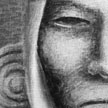
Lost Horizons: Edward Biberman
“Biberman (1904-1986) was an American realist painter that carved out a place for himself in mid-20th century Los Angeles, despite the ascendancy and domination of abstract expressionism.
His figurative paintings examined social inequality, racial oppression, and the plight of workers, placing him in the school of Social Realism. But his paintings focusing on the architecture of Los Angeles and the new – at the time – freeways of L.A., exposed his modernist side.”

The Agony of Ukraine
“Stepping into the quagmire stoked by super power geo-strategic interests, are a number of artists, arts organizations, and arts publications, some of which I will criticize in this article.
Oddly enough, none of the artists or artworks mentioned in this article present a cogent reason for exactly why Ukraine’s integration into the EU would result in a more prosperous and democratic Ukraine. This is especially interesting since millions of people from Spain to Greece have been demonstrating in opposition to the tough austerity measures of the EU.”
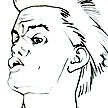
Who was Tomata du Plenty?
“As for the query regarding Tomata’s identity, answers might be found – to some extent – in a surprising exhibition at the Georgia Museum of Art, Boxers and Backbeats: Tomata du Plenty and the West Coast Punk Scene.
The show is an examination of Tomata’s naïve paintings in the context of the original 1977 L.A. punk rock milieu, and having been one of the earliest admirers of Tomata and the Screamers, it is a unique honor for me to have some of my drawings included in the exhibit.”
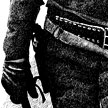
Police State
“In 1973 I created a drawing in my student sketchbook that was meant purely as an exercise; I never intended to show the sketch to anyone. Considering our tenuous collective future, I think it is important to show, and explain the artwork. I made the freehand drawing with a “rapidograph” technical pen, a tool I used often in those days. Symbolic of mute terror, the angst ridden face in the ink drawing was left without a mouth. A wordless homage to the Viennese savage, the face was loosely based on a photo of Kokoschka by Danish photographer Erling Mandelmann. But Kokoschka and his fellow Expressionists were not the only thing on my mind during those days.”
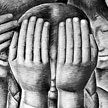
Alfredo Ramos Martínez: Picturing Mexico
“I have long admired the works of the Mexican artist Alfredo Ramos Martínez (1871-1946), and over the decades I was fortunate to see a handful of original works by him. I was always puzzled that so few in the U.S. remembered him, especially those of us living in Southern California where Martínez came to live and exercise considerable influence. Once a renowned and much sought after artist, the sands of time have buried Martínez, but an amazing exhibit of his works at the Pasadena Museum of California Art (PMCA), Picturing Mexico: Alfredo Ramos Martínez in California, should stimulate a new appreciation for his art.” Also read: Ramos Martínez & The Flower Vendors.

Roger Scruton at TRAC 2014
“My day at TRAC 2014 began with the keynote address delivered by British conservative philosopher, activist, and author Roger Scruton. Well-known in Britain, Scruton remains an obscure figure for most Americans, apart from those conservatives that take pleasure in reading weighty cultural/political criticism.
He is perhaps best known, at least in artistic circles, for his 2009 BBC documentary, Why Beauty Matters, which hauled postmodern art over the coals while praising the virtues of traditional representational art.” Also read TRAC 2014: Part II.

Newseum: Super-Sized R-Rated Version
“On Nov. 14, 2013, the Newseum in Washington, D.C. opened what it hoped would be a ‘blockbuster’ show, Anchorman: The Legend of Ron Burgundy – The Exhibit. If there was ever a more blatant abuse of a museum’s mission, I cannot think of what it might be.
Slated to run until Aug. 31, 2014, the exhibit was created in partnership with Paramount Studios to promote its latest movie, Anchorman 2: The Legend Continues, written and directed by Will Ferrell and Adam McKay.
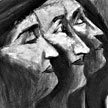
Prometheus: José Clemente Orozco
“The first modern fresco mural to be painted in the U.S. by a Mexican artist was titled Prometheus, and it was painted in 1930 at Pomona College in Claremont, California by José Clemente Orozco.
I photographed the mural in late January 2014, and those photos are the focus of this web post: close-up details that show the artist’s hand and the technical bravura of Orozco’s fresco painting.”

Serigrafía: Chicano Art at the PMCA
“As I have argued over the years, Chicano art is a well-spring that may help to invigorate the long dormant genre of American social realist painting.
While Serigrafía focuses exclusively upon silkscreen prints, it is worth noting that a number of the exhibiting artists are also painters (including this writer), and that Chicano/Latino print circles have long had very close association with the creation of public murals. If Serigrafía has a weakness as an exhibit, it is that it freezes its artists in a moment of time, and does not even hint at broader artistic production outside of poster making.”

Frida in Dubai-landia
“Let me be frank in my appraisal of contemporary Chicano art. It is far from its origins, and that in part is what this article is about. The roots are still viable, though the foliage is looking peculiar and in need of pruning.
The greater part of Chicano art is mired in tired clichés, as if portraits of ‘exotic’ Latinas wearing traditional clothes and posing with antique pistolas says anything meaningful about our past, present, or future. The school has largely reduced itself to painting those scenes of lush tropical jungles filled with colorful birds and happy peasants that David Alfaro Siqueiros detested and refused to paint. Something more is required today, and that is also a reason for this article.”

